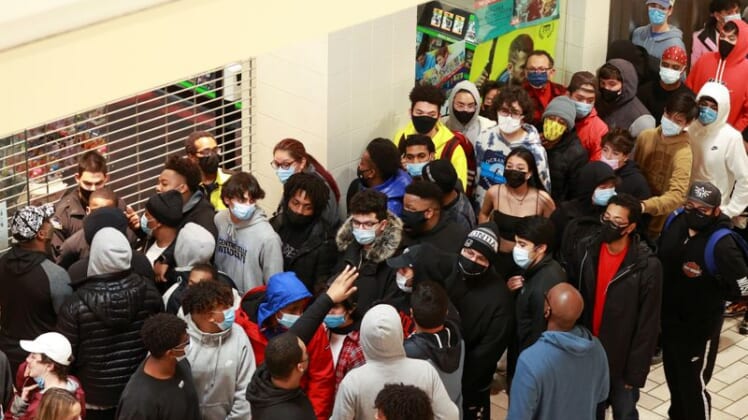U.S. vaccine plans take shape but no let-up on restrictions

WASHINGTON, D.C. (Reuters) – U.S. health authorities will hold an emergency meeting next week to recommend that a coronavirus vaccine awaiting approval be given first to healthcare professionals and people in long-term care facilities.
The meeting, announced on Friday by a U.S. Centers for Disease Control and Prevention (CDC) committee on immunizations, suggests that the Food and Drug Administration (FDA) may be close to authorizing distribution of the long-awaited medication, at least to those considered most vulnerable.
United Airlines has begun moving shipments of the vaccine, developed by Pfizer Inc, on charter flights to ensure it can be quickly distributed once it is approved, according to a person familiar with the matter.
The CDC’s Advisory Committee on Immunization Practices will vote on Tuesday to recommend that the FDA allow healthcare professionals and long-term care facilities to be the first two groups to get initial vaccine supplies, a CDC spokeswoman said.
A green light for any vaccine would come as welcome news to Americans, who political leaders have clamped under increasingly aggressive measures to curtail the spread of the virus.
Los Angeles County health officials on Friday banned all public and private gatherings for at least three weeks and urged residents to stay home as much as possible.
The county exempted religious services and protests from the order, citing constitutional protections in an apparent acknowledgment of a U.S. Supreme Court ruling this week that rejected New York state’s restrictions on churches and synagogues.
New York Governor Andrew Cuomo, a Democrat, dismissed the top court’s decision as “irrelevant,” saying it was narrowly tailored to specific areas no longer subject to the limits.
But the ruling could drive legal challenges against similar limits placed on houses of worship in other states, including California.
“It is fair to say that this Supreme Court ruling has broader implications and governors would be wise to be guided by it in any attempts to single out houses of worship for disparate treatment,” Randy Mastro, lead attorney for the Catholic Archdiocese of Brooklyn in the case, told Reuters.
Washington D.C. Mayor Muriel Bowser said this week her latest COVID-19 restrictions on gatherings also applied to indoor religious services, reducing the maximum number of worshippers from 100 to 50 people.
‘SKIP THE CROWDS’
Americans already weary from eight months of lockdowns began the holiday season on Friday under pressure to stay home, avoid gatherings and curtail Christmas shopping.
One day after the nation marked a low-key Thanksgiving, malls and retailers imposing strict COVID-19 rules saw fewer shoppers for the traditional Black Friday start of holiday shopping.
“Remember, skip the crowds and shop from home this Black Friday,” Kentucky Governor Andy Beshear, a first-term Democrat, wrote on Twitter.
Roughly 90,000 patients were being treated for COVID-19 in hospitals on Friday, a number that has doubled in the last month to the highest since the pandemic began.
“This is the reality we face when COVID-19 is allowed to spread unchecked – ICUs at capacity, not enough health care workers available,” New Mexico Governor Michelle Lujan Grisham said in a tweet.
Grisham, a Democrat, did not say who she believed had let the virus spread unchecked. The governor has imposed a lockdown requiring all “non-essential” businesses to close and residents to stay home.
About 880 people were hospitalized with COVID-19 on Friday in New Mexico. A hospital in rural Curry County was the latest to reach capacity in its intensive care unit this week, according to the county’s Facebook page.
Some politicians and health experts feared Americans traveling for Thanksgiving could spread the contagion. Many heeded advice to stay home on Thursday but others chose to travel, saying they were willing to risk illness to see family.
On the day before Thanksgiving, typically one of the busiest travel days of the year in the United States, more than 1.07 million people transited through U.S. airports – the most of any day since the start of the pandemic, according to the Transportation Security Administration.
More than 4 million traveled through airports from Sunday to Thursday, compared with more than 11 million for the same period last year, TSA data shows.
(Reporting by Gabriella Borter and Melissa Fares in New York, Susan Heavey, Lisa Lambert, Diane Bartz and David Shephardson in Washington, Anurag Maan in Bengaluru and Dan Whitcomb in Los Angeles; Writing by Dan Whitcomb; Editing by Rosalba O’Brien, Bill Tarrant, Robert Birsel)
